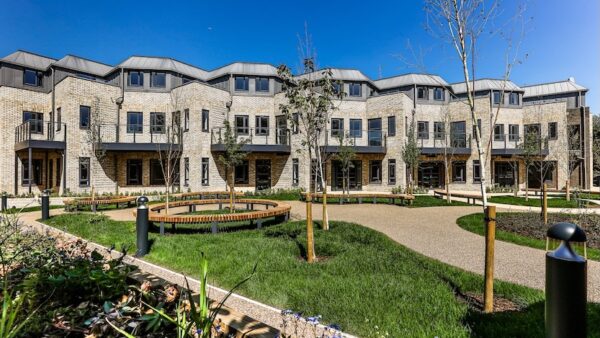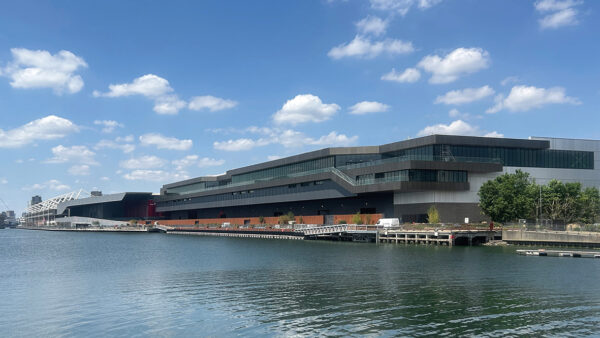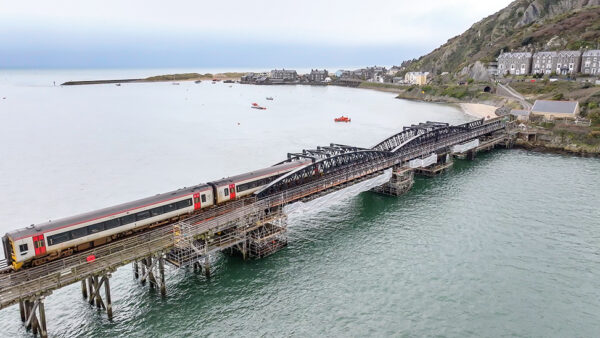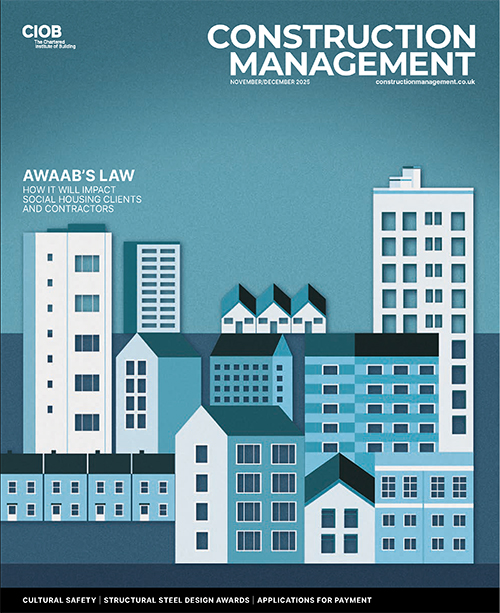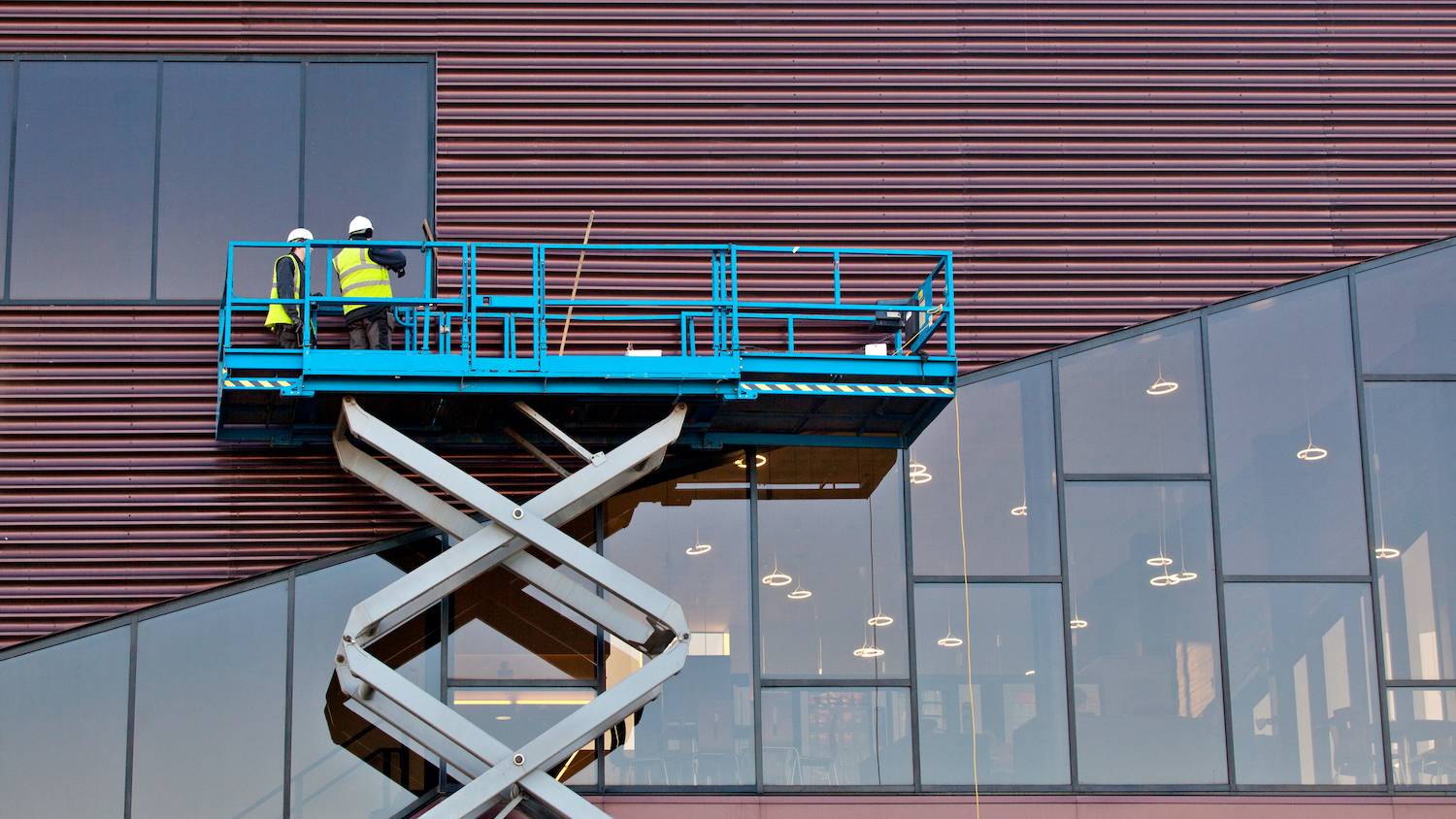As Germans head to the polls on 23 February, builders hope whoever wins understands what a terrible state the country’s bridges are in. By Rod Sweet.
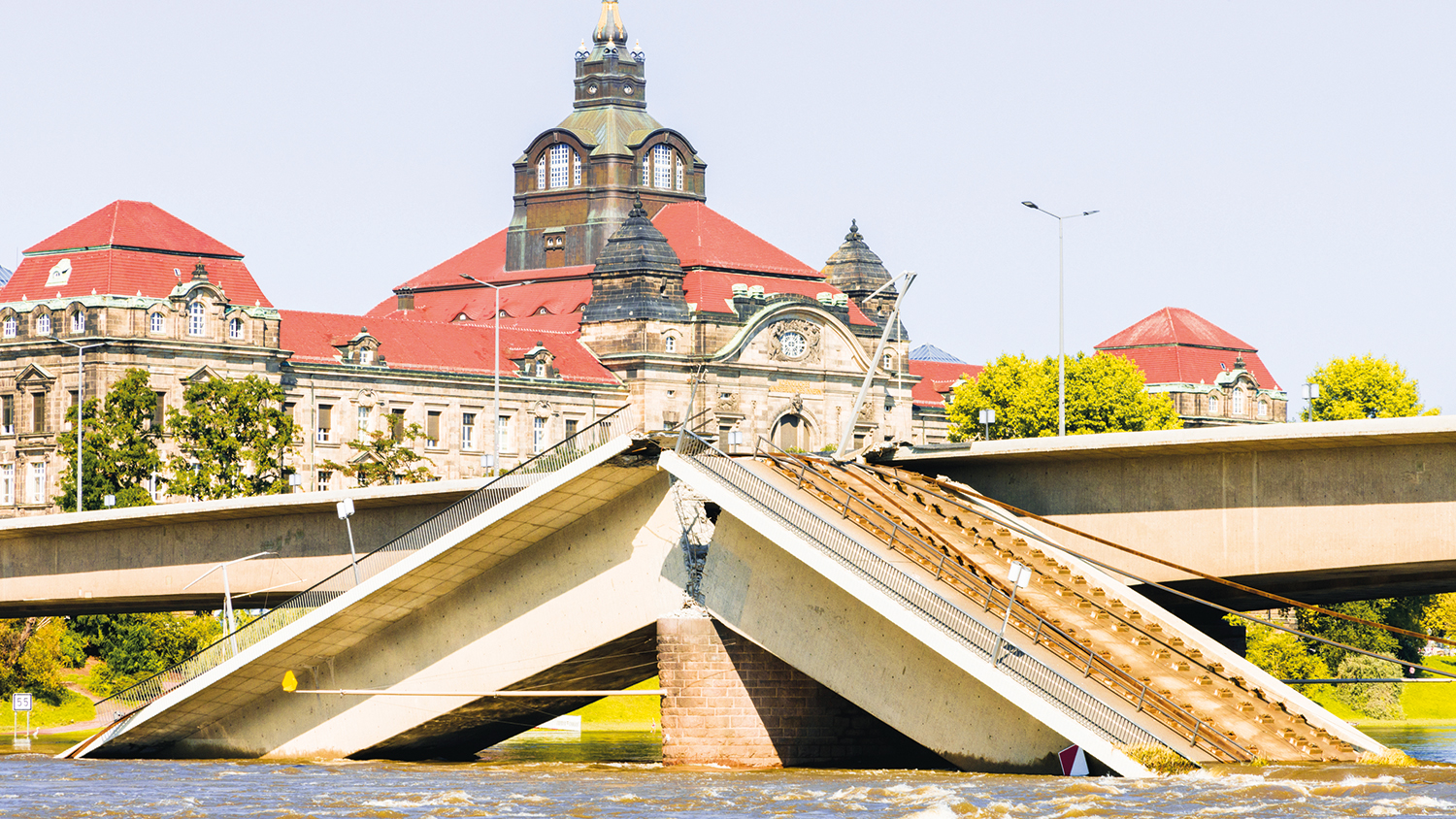
On 2 September last year, the city of Dresden began testing a new arrangement of cycle lanes on the Carola Bridge, the most central of the city’s four bridges across the Elbe, linking the Old and New towns.
The prestressed concrete bridge was built in the Soviet era between 1967 and 1971. Officials wanted to see if letting cyclists use a road lane in the middle of the bridge would cut friction with pedestrians since, until then, cyclists and pedestrians had shared a pedestrian lane at the edge.
The trial was to last until the end of the year but, just over a week later, at 3am on 11 September, one of the bridge’s three parallel spans collapsed without warning.
No one was hurt because the bridge was empty, but it was a narrow miss. The span that collapsed, span C, carries trams over the river, and the last tram of the night passed over just 10 minutes before. Dresdeners woke in the morning to traffic chaos.
“The bridge is a lifeline for the people, the economy and the culture of this city. It is the most important north-south connection,” said Dresden mayor Dirk Hilbert.
The city appointed Professor Steffen Marx from the Institute of Concrete Structures at Technical University Dresden to examine the cause of the collapse.
Marx visits Berlin
Then, on 9 October, the city’s construction mayor Stephan Kühn and Marx went to Berlin to meet members of the Bundestag to plead for cash. They pointed out that the bridge was a crucial artery for Dresden and a core part of the regional transport network.
“The collapse of the Carola Bridge will lead to follow-up costs that will overburden even a large municipality like Dresden,” Kühn said at the time. “The city cannot afford to rebuild the Carola Bridge without the help of the federal and state governments.”
There was something else: Marx’s initial findings showed the bridge had been assessed as good before the collapse. Later, Marx would report that the city had followed all statutory guidelines in maintaining and testing the bridge.
Kühn and Marx pointed out to lawmakers that this meant that conventional methods may not detect vulnerabilities before disaster struck, raising concerns over thousands of prestressed concrete bridges throughout Germany.
Coalition collapse
But then, on 6 November, something else collapsed: Germany’s coalition government. Tensions bubbling among the ruling Social Democrats (SPD), Greens and Free Democrats (FDP) boiled over when SPD chancellor Olaf Scholz sacked his FDP finance minister, Christian Lindner, leading to mass resignations of FDP ministers.
It meant that all federal decisions, including on the budget for fixing transport infrastructure and building more, were on hold while new elections were held and a new government formed.
On 16 December Chancellor Scholz lost the confidence vote he called, paving the way for snap elections on 23 February.
German builders have looked from Germany’s crumbling infrastructure to its crumbling politics with dismay.
“We are extremely worried,” said Jürgen Faupel and Daniel Jonas of the Federal Association of Medium-Sized Construction Companies (BVMB) in a joint statement on 3 December.
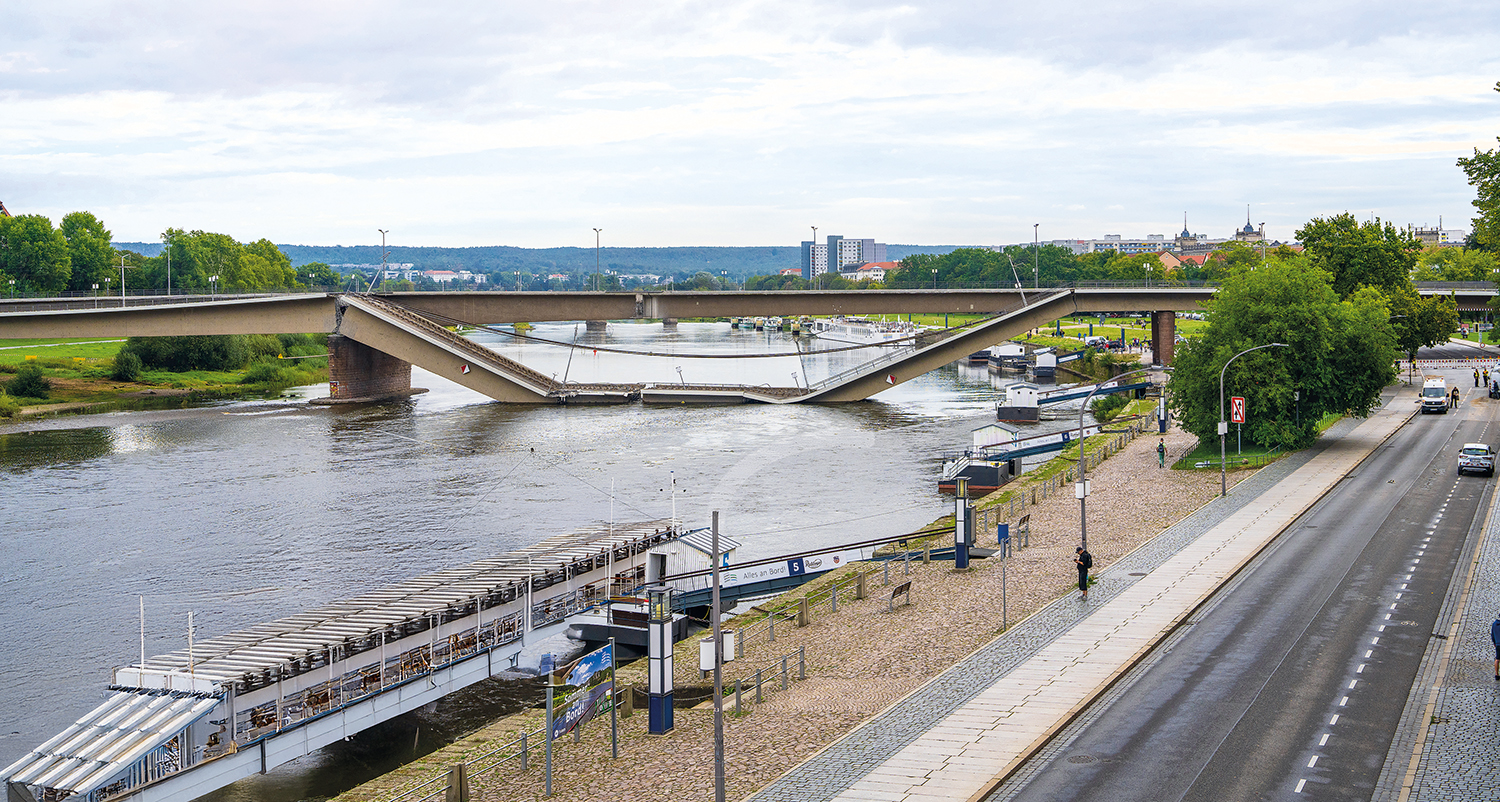
A new budget was unlikely before summer 2025, they said, effectively freezing the start of any major remediation programmes until then.
“This is poison for the infrastructure and for road and bridge builders,” said Jonas.
Seeds of destruction
Professor Marx unveiled interim findings from his investigation on 11 December and found the seeds of the bridge’s untimely destruction were sowed during its construction more than 50 years before.
The main cause was hydrogen-induced stress corrosion cracking due to moisture ingress during the construction phase, exacerbated by fatigue of the prestressing steels.
“Due to the manufacturing method commonly used 50 years ago and the influence of the weather on the steel during the construction period, the corrosion damage already occurred during the construction of the Carola Bridge, which was completed in 1971,” he wrote.
Clearly, if many bridges were built the way Carola Bridge was at the time, similar fates can be expected for many more bridges.
Unique problem for Germany
Meanwhile, state broadcaster DW reported in June last year that as many as 5,000 Autobahn bridges were in need of repair or replacement.
This would be a big problem for any country, but it’s uniquely problematic for Germany because of its controversial “debt brake”, a clause in the Basic Law, Germany’s constitution, inserted after the crash of 2008 making it illegal for the federal government to run up a deficit greater than 0.35% of its GDP.
Germany is the only G7 country with such a stricture. The EU rule for member states is eight times as generous, at 3% of GDP. It’s what brought Scholz’s coalition down. Scholz wanted higher spending to stimulate the economy, but finance minister Lindner refused, insisting on tax and spending cuts instead.
All eyes are now on 23 February. At time of writing, Friedrich Merz of the Christian Democratic Union party led in the polls. Last November, he suggested he was open to reforming the debt brake for vital investment, but that will depend on the vagaries of coalition wrangling.
Those who understand the problem of crumbling infrastructure will be hoping nothing else collapses in the meantime.





